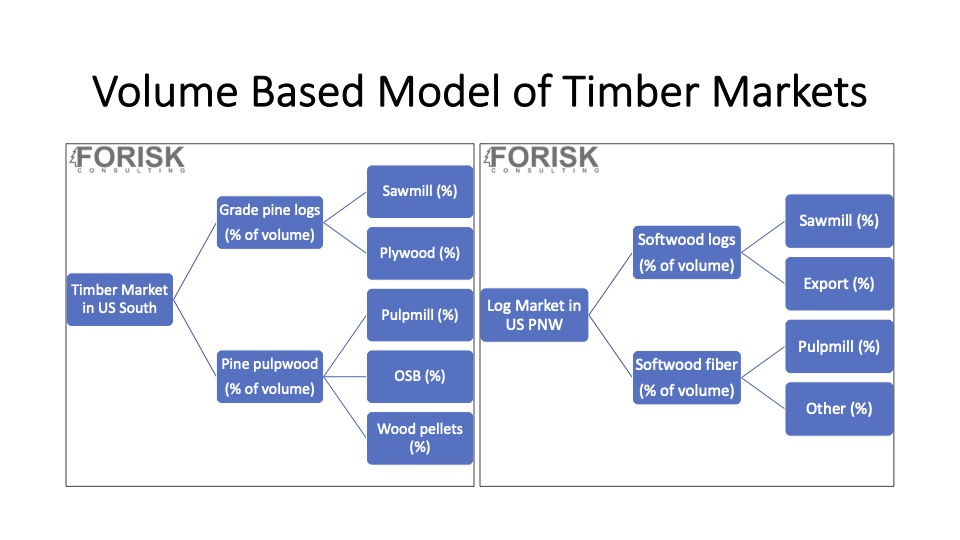For timberland investors, integrated firms that own timberland and mills, and wood-using manufacturers, the exercise for realizing value is specific to the trees grown, sold, and procured from each local timber market or wood basket. This forest industry reality becomes more apparent during times of significant change, whether turbulent tariffs and trade wars, unsettling economic recessions, or burgeoning capital investment.
As macroeconomic and political stories monopolize the headlines, those of us running, managing and supporting forest products businesses and timber assets understand that controlling what we can means understanding local operations, risks, and opportunities.
Custom Forecasts for Screening and Tracking Timber Markets
Recent posts by the Forisk team introduced the value proposition for Custom Market Forecasts (CMF) by focusing on the key questions and localized variances associated with forest industry performance and activities across regional markets. Differences across forest markets are further compounded by the regional peculiarities of market structures and operations in, for example, the South versus the Pacific Northwest. Consider how timberland owners and investors across geographies allocate their log resources (figure). Volume-based analyses, which focus on maximizing the value of trees grown and harvested given the available local mills, differ by end market, log size, and distance to the mill gate.

Market Balance and Sustainability
Custom Market Forecasts also address wood procurement and timberland management questions related to “balance” and sustainability. Wood market balance speaks to the mix and match of mills and forests. Different wood processing facilities have different needs, economics, and strategies. A healthy timber market includes strong, growing demand for wood across a balanced “portfolio” of mill types. Failing to account for the explicit balance can throw off the analysis of a wood basket or timberland portfolio.
Wood consumers also seek to verify access to sustainable forest supplies. At Forisk, we allocate most of our resources to confirming knowable facts on the ground related to mill investments, forest supplies, technological advances, logging capacities and ownership trends. Knowing the number of mills and localized capacity by end product provides a means to project industry performance from the bottom up to support each Custom Market Forecast.
Conclusion
Through this process, we want to avoid building unnecessarily complex models for assessing the sustainability, operability, and future timber pricing of the existing markets for logs and wood. Rather, we want to build on physical facts and client relevant scenarios to support investment decisions and operational management and, when helpful, to test the implications of economic turbulence and political frictions.
To learn more about Forisk’s Custom Market Forecasts, please contact Nick DiLuzio (ndiluzio@forisk.com).

Leave a Reply